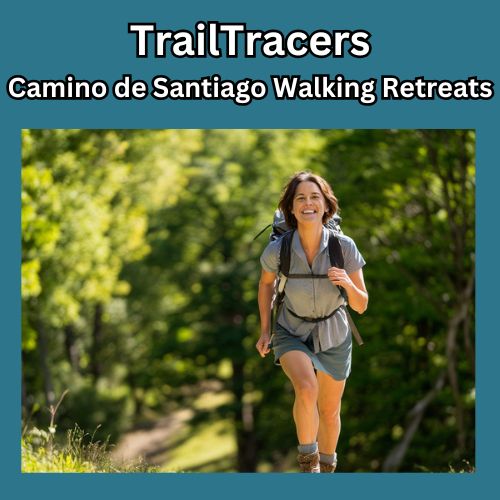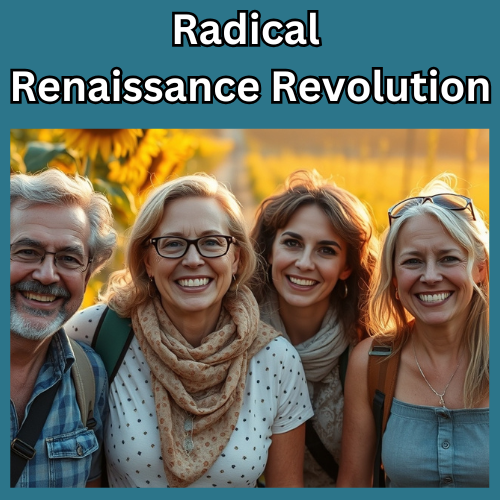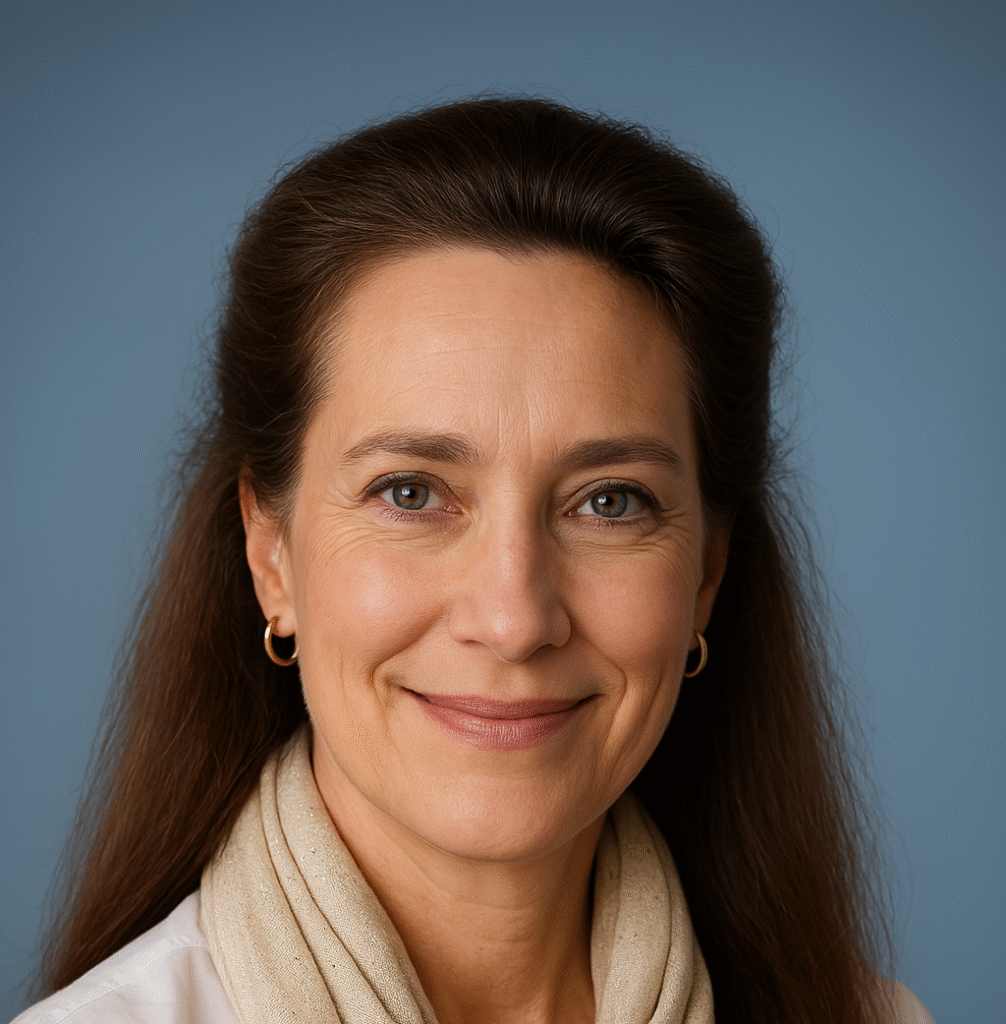Summary
Revolutionary longevity research reveals that three powerful forces—nature immersion, purposeful movement, and meaningful connection—can literally rewire your brain for increased longevity and vitality. This isn’t just feel-good wellness advice; it’s hard science showing how neuroplasticity allows us to create new neural pathways well into our 80s and beyond. By understanding how these elements trigger brain-derived neurotrophic factor (BDNF), reduce cortisol, and activate the parasympathetic nervous system, we can harness our brain’s remarkable ability to heal, grow, and thrive at any age. The key lies not in expensive treatments or complicated protocols, but in returning to fundamental human experiences that our brains are evolutionarily wired to crave.
Introduction
What if everything you thought you knew about aging was wrong?
While pharmaceutical companies race to develop billion-dollar longevity drugs and biohackers obsess over ice baths and red light therapy, groundbreaking neuroscience research is revealing something far more profound—and surprisingly simple. Your brain possesses an extraordinary ability to rewire itself for longevity, and the keys to unlocking this potential have been hiding in plain sight: in the rustle of leaves, the rhythm of your footsteps, and the stories that give your life meaning.
This isn’t another wellness trend or anti-aging fad. This is about understanding how three fundamental human experiences—our connection to nature, our need for movement, and our search for purpose—can literally reshape the neural architecture of our brains, creating new pathways that not only help us live longer but help us thrive with vitality and joy well into our later years.
The story I’m about to share illustrates just how powerful this transformation can be.
Linda’s Awakening
Linda Coston pressed her palm against the rough bark of the ancient oak, feeling its ridged texture bite gently into her skin. At 67, she’d expected this hiking retreat to be another well-intentioned but ultimately disappointing attempt to “find herself”—the kind of thing her daughter Emma kept suggesting with increasing urgency since Linda’s retirement had devolved into endless Netflix binges and doctor’s appointments.
The morning mist clung to the forest floor like a gray silk scarf, carrying the earthy perfume of decomposing leaves and new growth. Linda inhaled deeply, surprised by how the crisp air seemed to awaken something dormant in her chest—not just her lungs, but something deeper, more essential.
“I feel ridiculous,” she whispered to the tree, then immediately felt more ridiculous for talking to it. But the forest seemed to whisper back through the gentle percussion of droplets falling from pine needles and the distant trill of a wood thrush.
Three months earlier, Linda had been a different person entirely. The panic attack in the grocery store checkout line had been her wake-up call—her heart hammering against her ribs like a trapped bird while fluorescent lights buzzed overhead like angry wasps. The teenager bagging her groceries had asked if she was okay, and Linda had realized she couldn’t remember the last time anyone had looked at her, really looked at her, with genuine concern.
“I’m disappearing,” she’d told her reflection that night, studying the lines around her eyes that seemed to have deepened overnight. Her doctor had mentioned something about cortisol levels and chronic stress, but the words had floated past her like leaves on water. All Linda knew was that she felt ancient, not just old—as if her very cells had forgotten how to dance.
Now, six days into the retreat, something extraordinary was happening. Her morning walks had evolved from reluctant shuffles to eager explorations. Yesterday, she’d noticed herself unconsciously matching her breathing to her footsteps—four counts in, four counts out—creating a rhythm that seemed to synchronize with her heartbeat. The simple act of walking among the towering redwoods had become a moving meditation.
But it was this morning’s journaling exercise that had cracked something open. Sarah, their guide, had asked them to write about a moment when they’d felt most alive. Linda’s pen had moved across the page as if possessed, describing a day forty years ago when she’d taught her daughter to skip stones at the lake. She could still feel the smooth weight of the perfect stone in her palm, still hear Emma’s delighted squeal when her stone managed three bounces across the glassy surface.
“I used to be someone who taught people how to make magic with stones,” Linda had written, tears blurring her vision. “When did I forget that person?”
As she stood now with her hand against the oak’s ancient bark, Linda felt that forgotten person stirring back to life. The tree’s solidity seemed to transfer through her palm into her bones, reminding her of her own deep roots. A red-winged blackbird landed on a branch just above her head, cocking its bright eye at her as if to say, “About time you showed up.”
Linda laughed—actually laughed—the sound surprising her with its richness. When was the last time she’d laughed alone, not at a TV show or social media post, but from pure joy? The bird trilled in response, and Linda felt something click into place in her chest, like a compass needle finding true north.
That afternoon, during the group’s “purpose circle,” Linda found herself speaking words she didn’t know she was thinking: “I want to start a nature program for seniors in my community. Not just for exercise, but for wonder. For remembering who we are when we’re not afraid.”
The words hung in the air like incense, and Linda saw nods around the circle—other faces lighting up with recognition and possibility. Margaret, the retired teacher, offered to help develop curriculum. Frank, the former park ranger, promised to scout locations. In that moment, surrounded by the symphony of crickets beginning their evening chorus and the golden light filtering through the canopy, Linda felt her brain literally changing, new neural pathways sparking to life like stars emerging at dusk.
Three weeks later, back home, Linda stood before her bathroom mirror again. The face looking back was the same, yet utterly transformed. The eyes held light now, purpose. Her shoulders had straightened, and there was something in her posture that spoke of roots going deep and branches reaching wide.
Her phone buzzed with a text from Emma: “Mom, you sound different when you talk. Happier. What happened up there?”
Linda smiled, remembering the weight of the stone in her palm, the ancient wisdom of the oak, the bird that had welcomed her back to herself. “I remembered how to make magic,” she typed back. “Want to learn how to skip stones?”
Five Key Takeaways: The Science Behind the Magic
1. Nature Activates Your Brain’s Reset Button
Research shows that just 20 minutes in nature can significantly reduce cortisol levels and activate the parasympathetic nervous system—your body’s “rest and digest” mode. Dr. Marc Berman’s groundbreaking studies at the University of Chicago reveal that nature exposure increases activity in the prefrontal cortex while quieting the default mode network, the brain region associated with rumination and anxiety. This isn’t just relaxation; it’s neurological rejuvenation.
2. Movement Becomes Medicine Through Neuroplasticity
Physical activity doesn’t just maintain your brain—it rebuilds it. Exercise triggers the release of brain-derived neurotrophic factor (BDNF), essentially Miracle-Gro for neurons. Dr. John Ratey calls exercise “the single most powerful tool you have to optimize your brain function.” Linda’s rhythmic walking created new neural pathways while strengthening existing ones, literally rewiring her brain for resilience and joy.
3. Purpose Activates Longevity Genes
When Linda discovered her mission to help other seniors connect with nature, she triggered what researchers call “eudaimonic well-being”—happiness derived from meaning rather than pleasure. Studies by Dr. Steve Cole at UCLA show that this type of fulfillment activates genes associated with immune function and longevity while suppressing inflammatory genes. Purpose isn’t just psychological; it’s physiological.
4. Social Connection Multiplies Neural Benefits
The group dynamic of Linda’s retreat amplified individual healing. Mirror neurons fired as participants witnessed each other’s transformations, creating a collective neuroplasticity effect. Dr. Lisa Berkman’s research at Harvard demonstrates that strong social connections can increase lifespan by 50%—equivalent to quitting smoking.
5. Sensory Engagement Awakens Dormant Neural Networks
Linda’s rich sensory experience—feeling bark, hearing birds, smelling earth—activated multiple brain regions simultaneously. This cross-modal stimulation strengthens neural networks and creates new synaptic connections. As neuroscientist Dr. Merzenich notes, “The brain changes physically, functionally, and chemically as you acquire a skill.”
Your Transformation Toolkit
Journaling Prompt: “The Person I Used to Be”
Find a quiet space in nature (even a park bench will do) and write continuously for 20 minutes about this prompt: “I used to be someone who…” Don’t edit or analyse—let your pen flow. Focus on moments when you felt most alive, creative, and connected. What qualities did that person possess? What brought them joy? How can you invite that person back into your current life?
This exercise activates both the default mode network (through introspection) and the task-positive network (through focused writing), creating new neural connections between past and present selves.
The 5-4-3-2-1 Nature Grounding Exercise
When you feel stressed or disconnected, step outside and identify:
- 5 things you can see (clouds, leaves, birds)
- 4 things you can touch (bark, grass, stones)
- 3 things you can hear (wind, insects, footsteps)
- 2 things you can smell (flowers, earth)
- 1 thing you can taste (fresh air, morning dew)
This sensory engagement immediately shifts your nervous system from fight-or-flight to rest-and-digest mode.
The Purpose Walking Meditation
Take a 20-minute walk while contemplating this question: “How can my unique experiences and wisdom serve others?” Let the rhythm of your steps guide your thoughts. Don’t force answers—let them arise naturally. This combines the neurological benefits of movement with the life-extending power of purpose.
“In every walk with nature, one receives far more than they seek.” — John Muir
“The brain is not designed to multitask. When people think they’re multitasking, they’re actually just switching from one task to another very rapidly. And every time they do, there’s a cognitive cost.” — Earl Miller, MIT Neuroscientist
“We are not going to be able to operate our Spaceship Earth successfully nor for much longer unless we see it as a whole spaceship and our fate as common. It has to be everybody or nobody.” — Buckminster Fuller
Further Reading
Books:
- “The Nature Fix” by Florence Williams – Comprehensive exploration of nature’s impact on the brain
- “Spark: The Revolutionary New Science of Exercise and the Brain” by John J. Ratey – The definitive guide to movement as medicine
- “The Gifts of Imperfection” by Brené Brown – Understanding courage, compassion, and connection
- “Forest Bathing” by Dr. Qing Li – The science and practice of shinrin-yoku
Research Papers:
- “Nature Experience Reduces Rumination and Subgenual Prefrontal Cortex Activation” (Bratman et al., 2015)
- “Interacting with nature improves cognition and affect for individuals with depression” (Berman et al., 2012)
- “A functional genomic perspective on human well-being” (Fredrickson et al., 2013)
Documentaries:
- “The Nature of Things: Forest Medicine” (CBC)
- “Happy” – Exploring the science of happiness and well-being
Ready to Rewire Your Brain? Join Our Nature Immersion Anti-Ageing Retreat
Experience your own transformation like Linda’s at our upcoming Nature Immersion Anti-Ageing Retreat. This isn’t just another wellness retreat—it’s a scientifically-grounded journey into neuroplasticity and renewal.
What You’ll Experience:
- Guided forest bathing sessions designed to activate your parasympathetic nervous system
- Movement (walking the Camino) that boost BDNF and create new neural pathways
- Purpose-discovery workshops that activate longevity genes
- Narrative therapy sessions to reconnect with your authentic self
- Community connections that multiply healing benefits
When: Starts 1st Saturday March to December Where: Southwest France
Limited spaces available. Visit our website to secure your spot in the next cohort of brain-changers and life-renewers.

If your soul is craving fresh air, meaningful movement, and a chance to reconnect with nature, join us on a Camino de Santiago Crossroads Retreat in the southwest of France. This isn’t just a scenic hike – it’s a powerful, natural reboot for your body, mind, and spirit. Imagine quiet paths, rolling hills, cozy evenings, and slow conversations. No fitness requirements. No forced bonding. No pressure to have a breakthrough. Just one foot in front of the other, and a journey that meets you exactly where you are.
Frequently Asked Questions
Q: I’m in my 70s—is it too late for my brain to change? A: Absolutely not! Neuroplasticity continues throughout life. Dr. Michael Merzenich’s research shows significant brain improvements in people well into their 80s and 90s. Linda’s story at 67 is just one example of countless transformations possible at any age.
Q: How quickly can I expect to see changes? A: Some benefits are immediate—cortisol reduction happens within 20 minutes of nature exposure. Neuroplasticity changes typically become noticeable within 2-4 weeks of consistent practice. Long-term structural changes develop over 2-3 months.
Q: Do I need to live near forests or mountains to benefit? A: While pristine wilderness is ideal, any green space provides benefits. Urban parks, tree-lined streets, even indoor plants can activate healing responses. The key is consistent exposure and mindful attention to natural elements.
Q: I have mobility limitations—can I still participate? A: Absolutely! Our programs are adaptable to all mobility levels. Even sitting meditation in nature, gentle movement, and sensory engagement provide profound benefits. We’ve seen remarkable transformations in participants with various physical limitations.
Q: Is this scientifically proven or just feel-good philosophy? A: This approach is grounded in rigorous neuroscience research from institutions like Stanford, Harvard, and the University of Chicago. Every technique we use is backed by peer-reviewed studies and measurable neurological changes.
Conclusion: Your Brain’s Extraordinary Invitation
As I write this, I’m sitting beneath the same oak tree where Linda had her breakthrough moment. Its branches stretch toward a sky painted in watercolour clouds, and I’m struck by the profound simplicity of what we’ve discovered together.
Your brain—right now, at this very moment—is extending an invitation. It’s inviting you to step outside, to move with intention, to reconnect with the parts of yourself you may have forgotten. It’s offering to rewire itself for vitality, purpose, and joy, regardless of your age or circumstances.
The science is clear: nature, movement, and meaning aren’t just pleasant additions to life—they’re fundamental requirements for a thriving brain and a longevity that’s about more than just adding years to your life, but life to your years.
Linda discovered this truth among the redwoods, but your oak tree is waiting wherever you are. Your brain is ready to change. Your story is ready to be rewritten.

Ready to start again, stronger than ever before? This quiz will help you find out. It is not just about measuring where you are right now; it’s about shining a light on the areas of your life that feel meaningful, as well as those that might need attention. It’s an opportunity to reflect, recalibrate, and take steps toward a life that’s not only successful but profoundly fulfilling. Take The Quiz

“I am an experienced medical doctor – MBChB, MRCGP, NLP master pract cert, Transformational Life Coach (dip.) Life Story Coach (cert.) Stress Counselling (cert.) Med Hypnotherapy (dip.) and EAGALA (cert.) I may have an impressive number of letters after my name, and more than three decades of professional experience, but what qualifies me to excel at what I do is my intuitive understanding of my clients’ difficulties and my extensive personal experience of managing major life changes using strategies I developed over many years.” Dr M Montagu
Research
A growing body of research has found that regular exposure to natural environments is associated with increased longevity, improved physical and mental health, and slower biological aging. Studies report that individuals who spend more time in nature—whether through access to green spaces, forest bathing, or gardening—exhibit lower mortality rates, particularly from cardiovascular and respiratory diseases, and often display longer telomere lengths, a biomarker of cellular aging.
American Psychological Association. (2025, April 8). Nurtured by nature. Monitor on Psychology, 51(3).
Argentieri, M. A., Amin, N., J., A., Sproviero, W., Collister, J. A., Keestra, S. M., Kuilman, M. M., Ginos, B. N., Ghanbari, M., Doherty, A., Hunter, D. J., Alvergne, A., & Van Duijn, C. M. (2025). Integrating the environmental and genetic architectures of ageing and mortality. Nature Medicine, 31(3), 1016-1025.
Van den Bosch, Matilda Live long in nature and long live nature! The Lancet Planetary Health, Volume 1, Issue 7, e265 – e266
Jimenez MP, DeVille NV, Elliott EG, Schiff JE, Wilt GE, Hart JE, James P. Associations between Nature Exposure and Health: A Review of the Evidence. Int J Environ Res Public Health. 2021 Apr 30;18(9):4790.
Gregory N. Bratman et al. ,Nature and mental health: An ecosystem service perspective.Sci. Adv.5,eaax0903(2019).
Nikitin J, Rupprecht F, Ristl C, Korlat S. NATURE EXPOSURE IS ASSOCIATED WITH POSITIVE VIEWS ON AGING. Innov Aging. 2024 Dec 31;8(Suppl 1):264–5.

